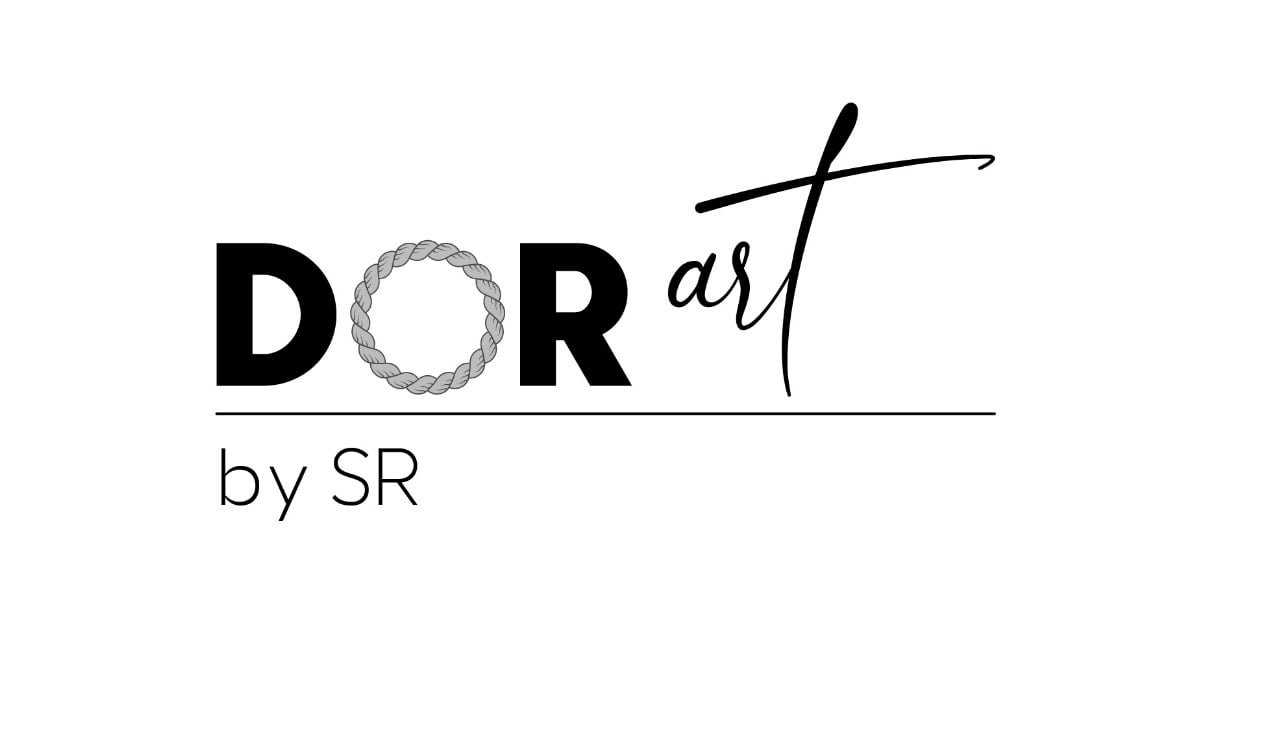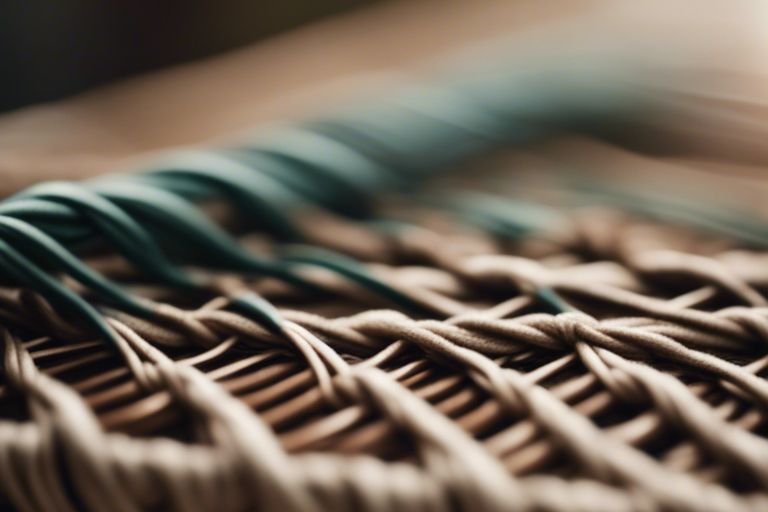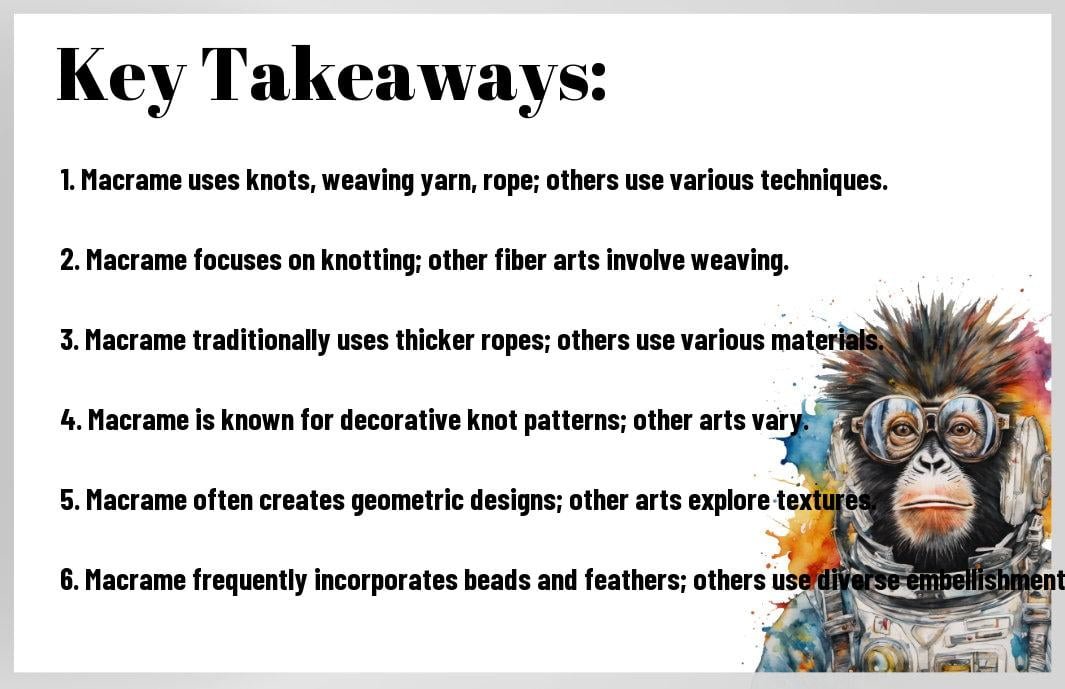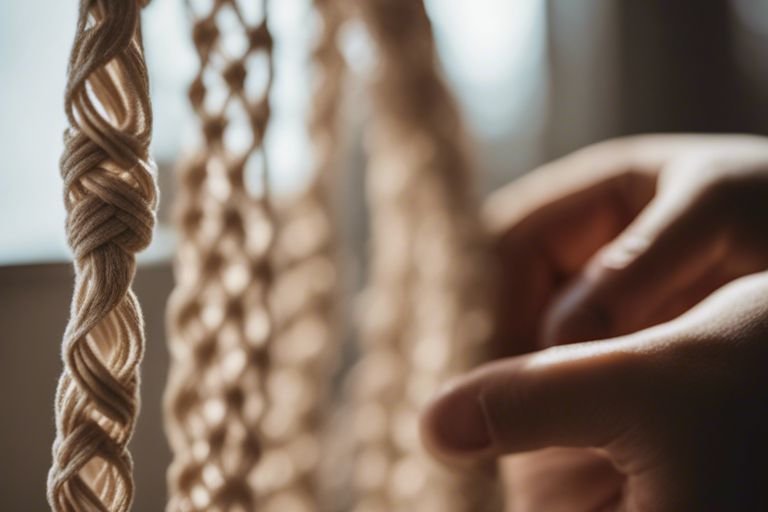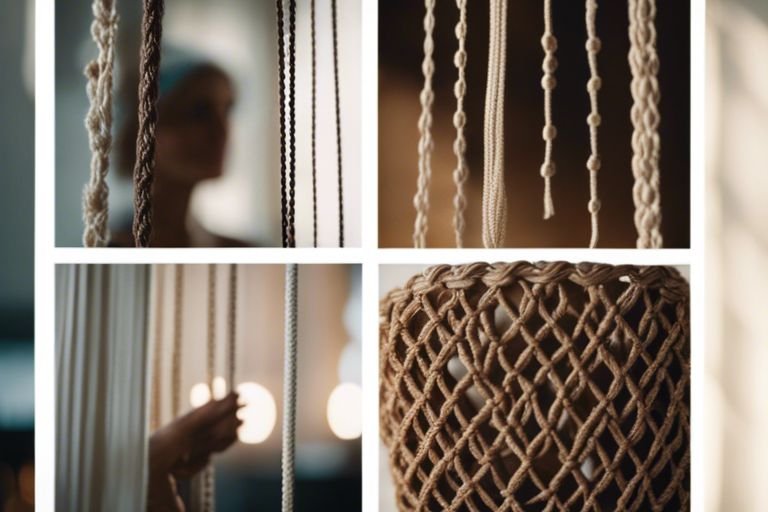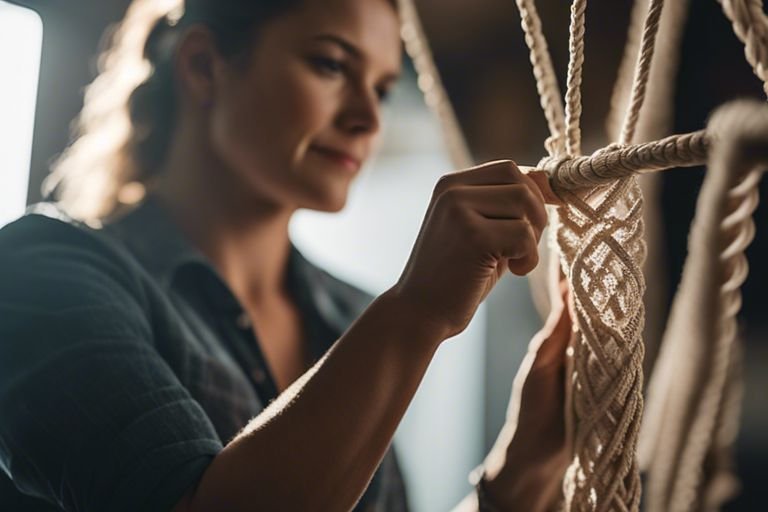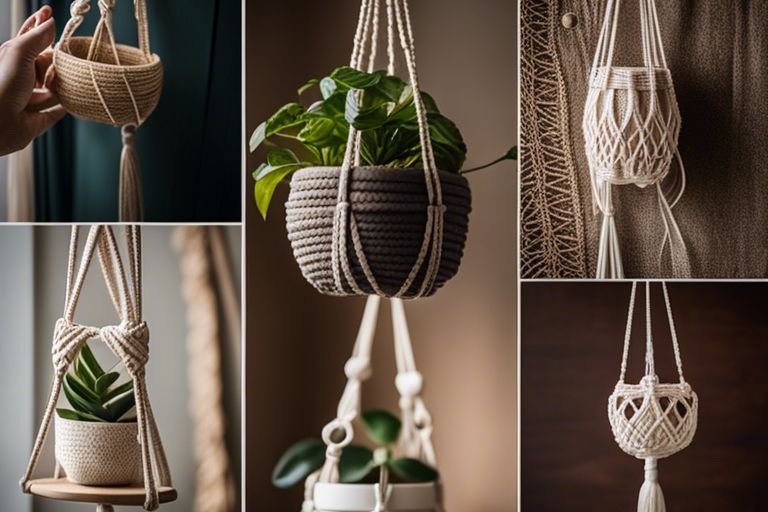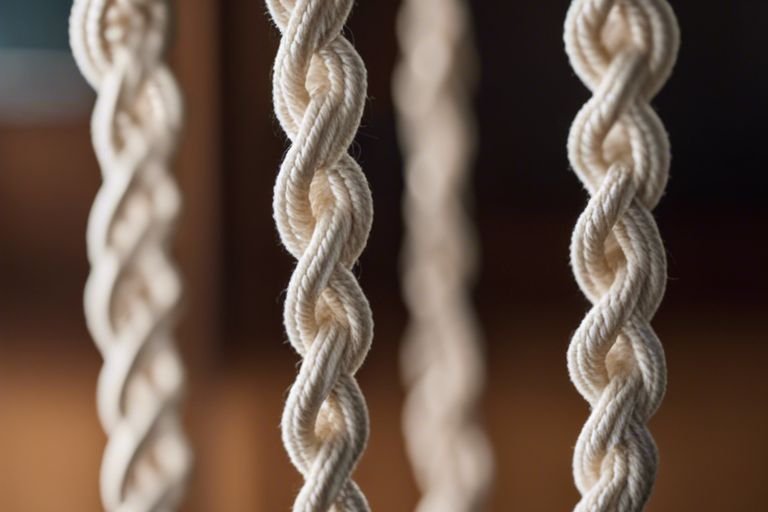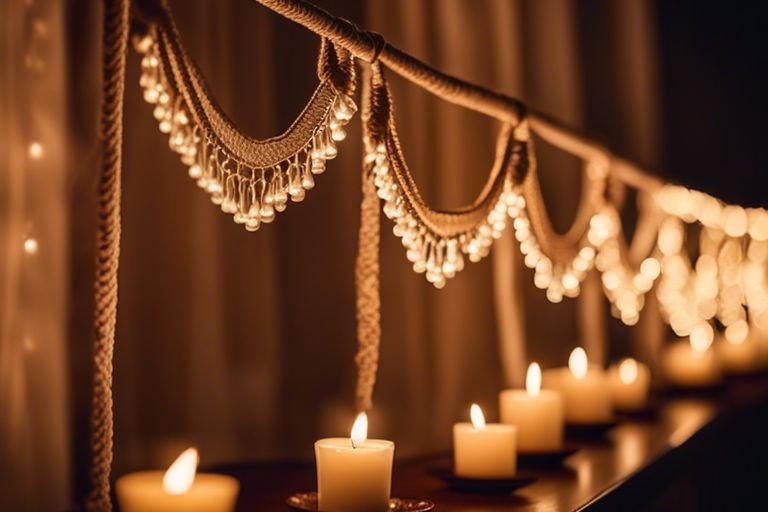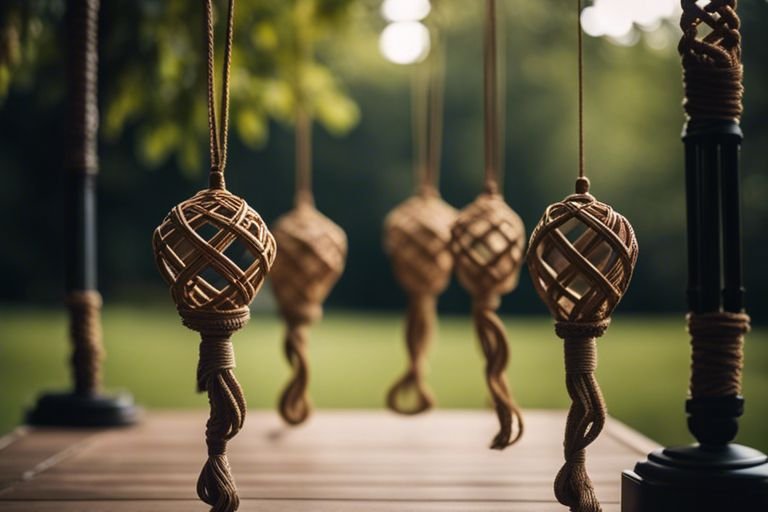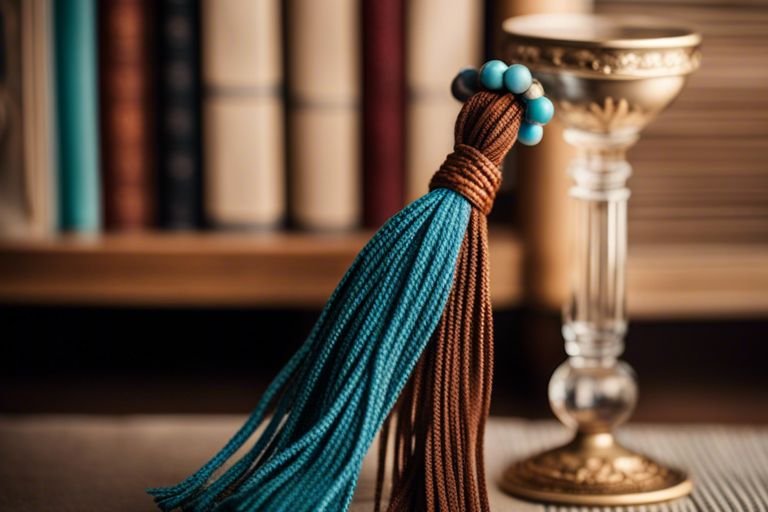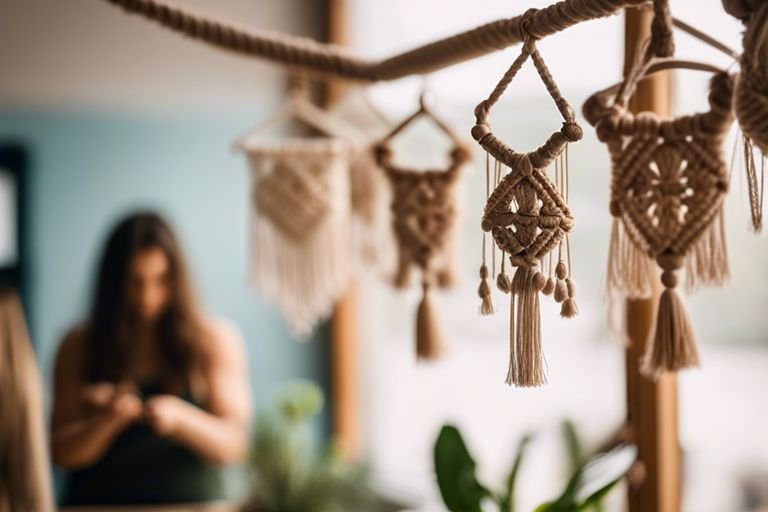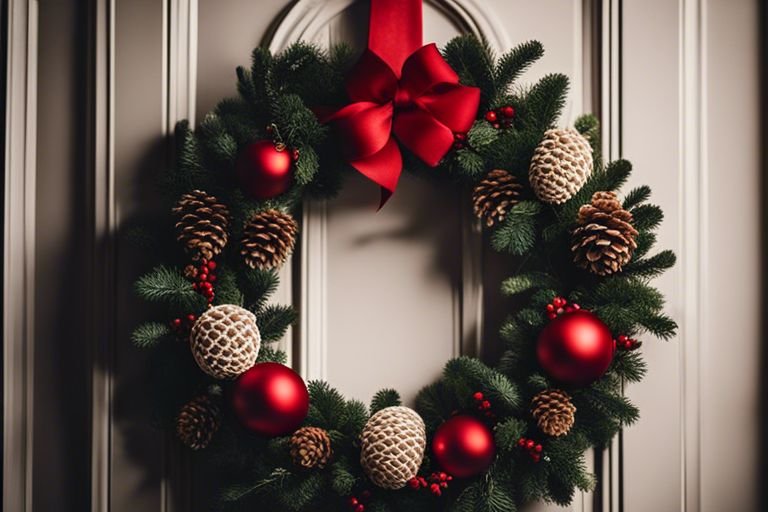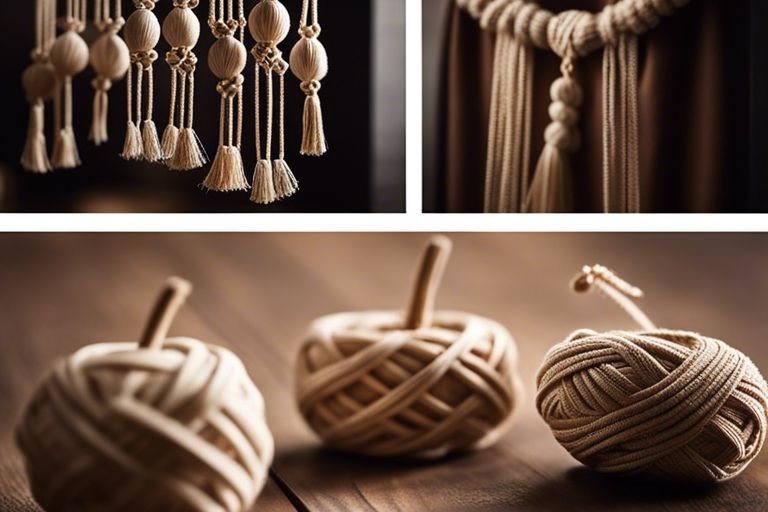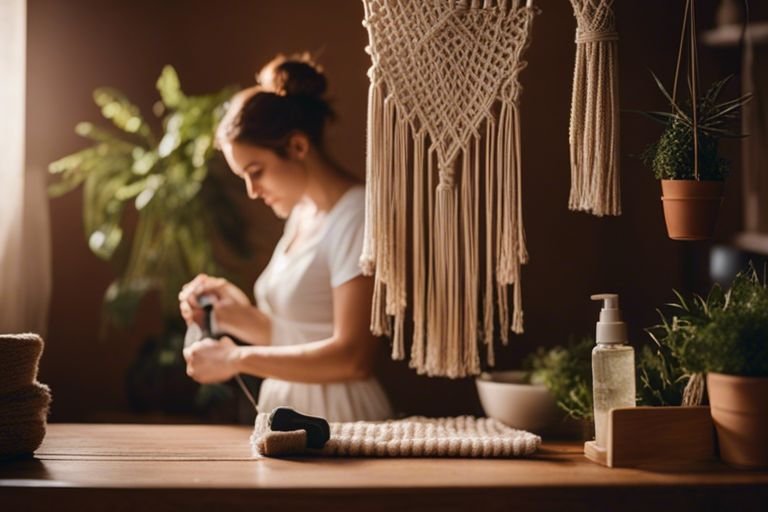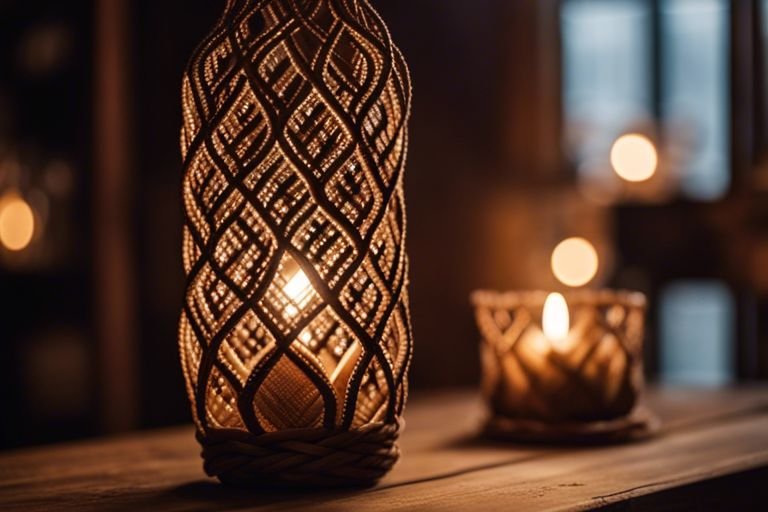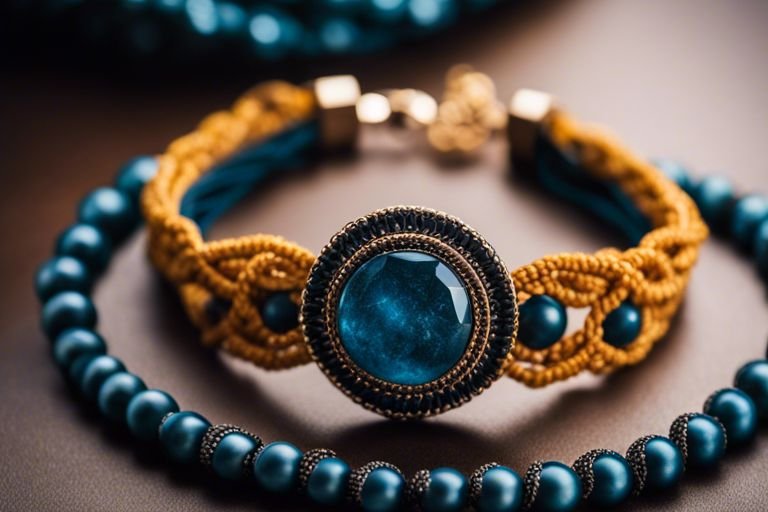Within Fiber Arts, each craft offers its unique techniques, materials, and aesthetic appeal. macrame, a form of textile created through knotting, stands out among various fiber arts such as weaving, knitting, and crocheting. Understanding the distinctions between macrame and other fiber arts can help enthusiasts appreciate the nuances of each craft and choose the best-suited technique for their creative projects.
Key Takeaways:
- Material: macrame uses predominantly knotting techniques with cords or ropes, while other fiber arts like weaving and knitting involve interlacing threads or yarn.
- Structure: macrame often creates intricate patterns through the combination of different types of knots, giving it a distinct textured look compared to other fiber arts.
- Usage: macrame is commonly used for creating decorative items such as wall hangings, plant hangers, and jewelry, while other fiber arts have a wider range of applications, including clothing, accessories, and home decor.
Historical Context
Origins of Macrame
One of the earliest forms of macrame can be traced back to the 13th century, when Arabic weavers used decorative knots in the finishing of textiles. It gained popularity during the 17th century in Europe due to the influence of sailors who used macrame to create decorative and functional items on board ships.
Development of Other Fiber Arts
The development of other fiber arts such as knitting, crochet, and weaving also has ancient beginnings. These crafts have been practiced across different cultures and societies for centuries, evolving and adapting to various techniques and purposes over time. Unlike macrame, which predominantly focuses on knotting techniques, these other fiber arts involve methods like looping, interlacing, and twisting fibers to create intricate designs.
The techniques and tools used in the development of other fiber arts like knitting and weaving have evolved with technological advancements. Unlike macrame, which relies primarily on the artisan’s hands and simple tools like a comb or a shuttle, knitting, and weaving have seen the introduction of machinery and mechanized looms for mass production.
To this day, both macrame and other fiber arts continue to be popular forms of creative expression, each offering unique methods and outcomes for artists and crafters to explore.
Techniques and Materials
Once again, if you are interested in learning more about different fiber arts techniques and materials, you can explore Exploring Macrame Knotting and Other Fiber Arts.
Knotting in Macrame
An imperative aspect of macrame is knotting. This ancient technique involves creating decorative patterns and designs by tying various knots in a specific arrangement. Some common knots used in macrame include the square knot, half knot, and lark’s head knot.
Tools and Techniques in Other Fiber Arts
Arts such as weaving, knitting, and crocheting also involve unique tools and techniques. Weavers use looms to create intricate patterns with yarn or thread. Knitters use needles to create loops and stitches to form fabric, while crocheters use hooks to interlock loops of yarn.
This variety of tools and techniques allows artisans to explore different textures, patterns, and structures in their fiber art creations. Each technique requires skill and practice to master, ultimately leading to beautiful and diverse works of art.
Styles and Applications
Unique Styles of Macrame
One of the unique styles of macrame is micro macrame, which involves using intricate knotting techniques to create delicate jewelry pieces. Another style is the modern macrame revival, which combines traditional macrame with contemporary design aesthetics to create wall hangings, plant hangers, and more.
Diversity in Fiber Arts Projects
To explore the diversity in fiber arts projects, one can look at the wide range of techniques and materials used across different disciplines, such as weaving, quilting, embroidery, and knitting. Each of these fiber arts offers a unique way to manipulate textiles and create stunning pieces of art.
The diversity of fiber arts projects allows for a broad spectrum of creative expression. While macrame may focus on knotting cords to create intricate patterns, other fiber arts, like weaving, involve interlacing threads on a loom to produce textiles. Quilting combines fabric pieces into intricate designs, while knitting and crochet use yarn to create textiles and wearable items. Each of these fiber arts showcases the versatility and beauty of working with textiles.
Comparison of Macrame with Other Fiber Arts
Your What is Fiber Art? helps to understand the diverse world of fiber art. Let’s explore how macrame differs from other fiber arts in the table below:
| Functional Differences | Artistic Variation and Cultural Significance |
Functional Differences
One key functional difference between macrame and other fiber arts is the technique used to create the pieces. macrame involves intricate knotting to produce patterns and designs, while other fiber arts like weaving and knitting use tools like looms and needles.
Artistic Variation and Cultural Significance
The artistic variation and cultural significance lie in the intricate patterns and designs that are unique to each culture and region. macrame pieces often showcase distinct cultural symbols and meanings. Other fiber arts may have different historical and cultural references embedded in their designs.
Differences
macrame stands out in its use of knotting techniques to create intricate patterns, whereas other fiber arts rely on different methods like weaving or felting. The cultural significance of macrame can vary greatly from that of other fiber arts, as each technique has its roots in diverse traditions and histories.
Final Words
Now that we have explored the differences between macrame and other fiber arts, it is clear that each form of art holds its own unique beauty and characteristics. macrame stands out for its intricate knotting techniques and the use of cords to create stunning patterns. While other fiber arts like knitting and crochet rely more on techniques like loops and stitches.
Understanding these distinctions can help artists and enthusiasts appreciate the diversity and creativity that each art form brings to the world of fiber arts. Whether you prefer the fluidity of knitting, the sculptural qualities of weaving, or the detailed precision of macrame, there is always something new to learn and explore in the vast world of fiber arts.
FAQ
Q: What are the differences between macrame and other fiber arts?
A: macrame is a craft that involves using knots to create decorative items, while other fiber arts like knitting and crocheting use tools like needles and hooks to create textiles.
Q: How is macrame different from weaving?
A: In macrame, knots create patterns and designs, while weaving involves intertwining threads on a loom to create fabric.
Q: What sets macrame apart from embroidery?
A: macrame uses knotting techniques to create textures and patterns, whereas embroidery involves stitching designs onto fabric using a needle and thread.
Q: How does macrame differ from tatting?
A: macrame involves creating intricate patterns using various knots, while tatting is a technique for creating lace by making knots and loops with a shuttle.
Q: What distinguishes macrame from quilting?
A: macrame involves knotting cords to create decorative items like wall hangings and plant hangers, whereas quilting involves sewing together layers of fabric to make a padded textile.
Q: How is macrame unique compared to braiding?
A: macrame involves using a variety of knots to create decorative patterns and designs, whereas braiding is a technique that involves interlacing three or more strands of material to create a unified structure.
Q: What are the differences between macrame and cross-stitch?
A: macrame involves creating patterns using a variety of knots, while cross-stitch is a form of embroidery where X-shaped stitches are used to create designs on a fabric grid.

